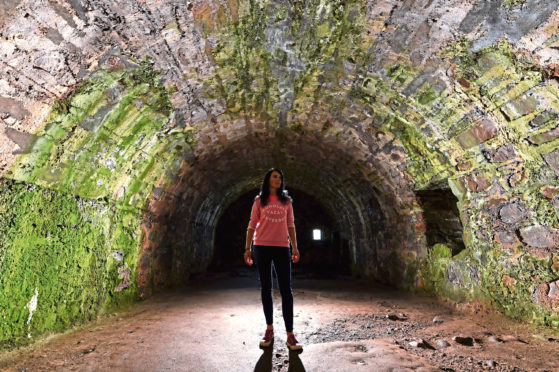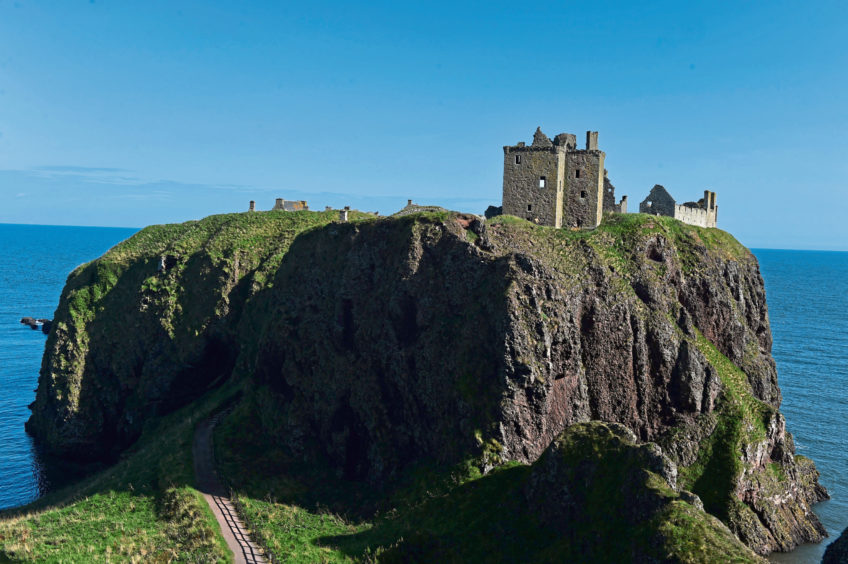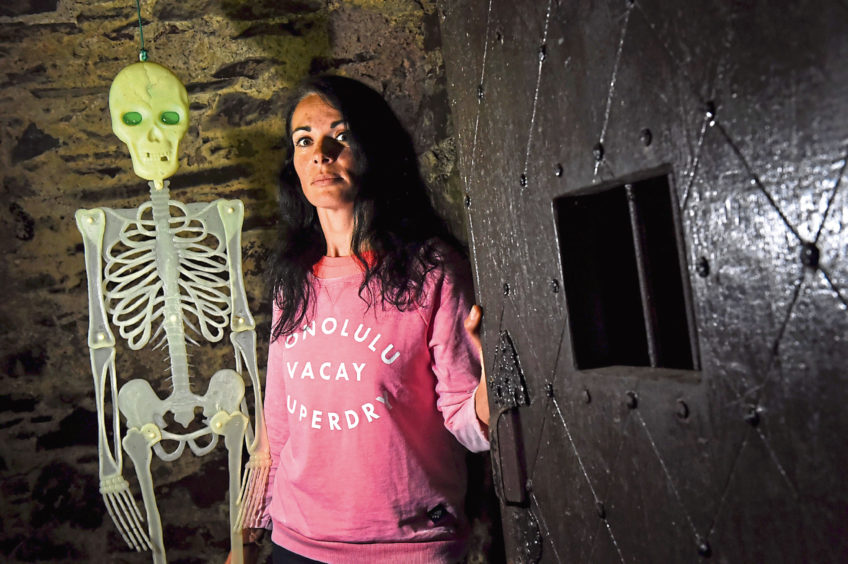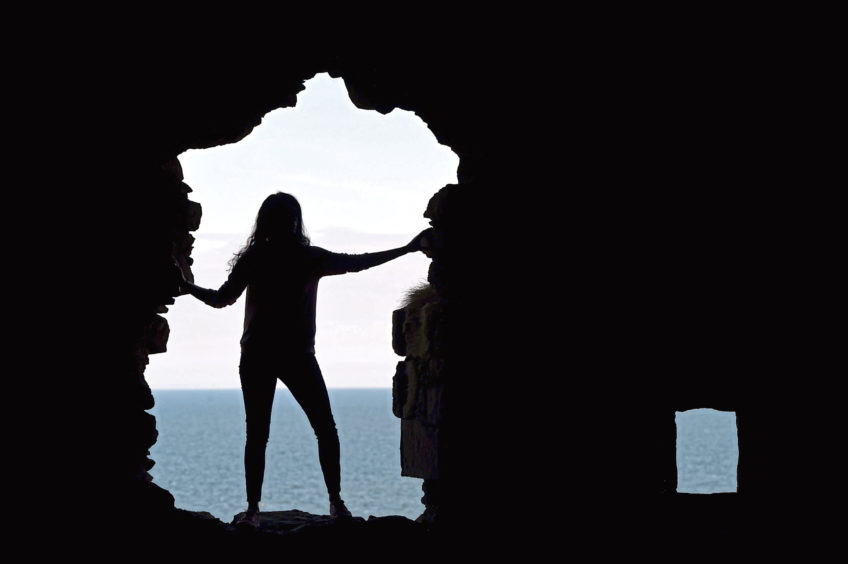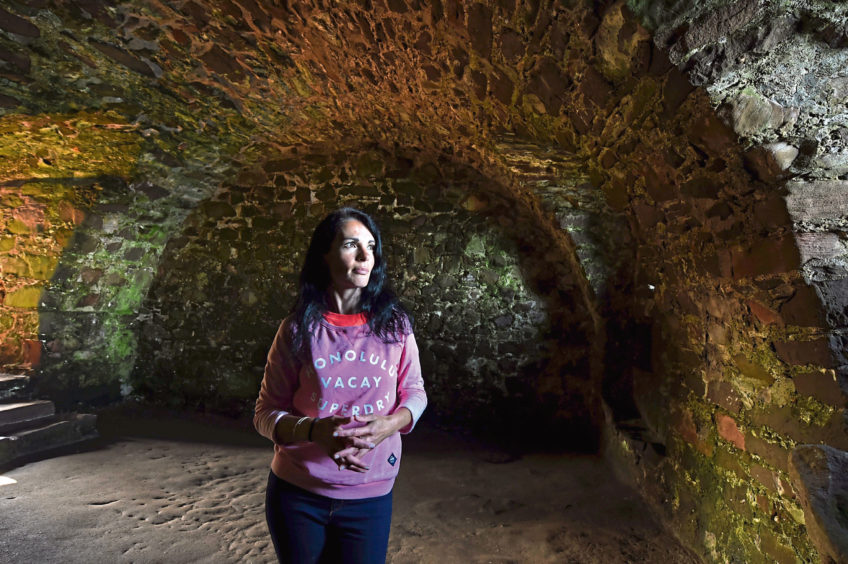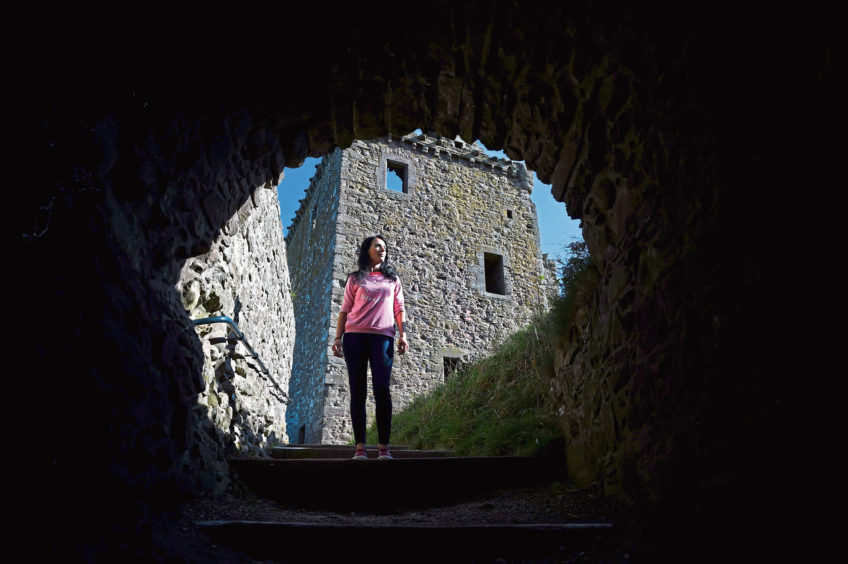Dunnottar is said to be one of the most haunted castles in Scotland. Gayle puts on her brave pants and explores.
As I walk into the old brewery I’m enveloped by a cold, creeping sensation.
The hairs on the back of my neck – and arms – stand up. I’m sure there’s someone watching me.
Turning round, I spot a ghostly green shape which appears to be floating along a wall.
It has to be one of Dunnottar Castle’s famous ghosts – the Green Lady.
Theories abound as to who she really is but it’s said the apparition is of a woman in a green tartan dress looking for her “lost children” – Picts who converted to Christianity in the 5th Century.
Deputy custodian Martin Gray says while the castle, near Stonehaven, boasts a fair number of ghost stories, the Green Lady is probably the most famous.
“People say they feel a presence in the brewery,” he frowns.
“It’s a bit strange but it could be down to many things. It’s dark and dingy and the wall is covered in a green-coloured mould.
“Perhaps the light hits at a certain angle? Whatever it is, it’s true that people feel on edge here.”
The ruined fortress is often described as one of the most haunted castles in Scotland and there’s definitely an eerie, otherworldly sense about the place.
Magnificently perched on a rocky headland jutting into the North Sea and surrounded by steep cliffs, Dunnottar was the home of the Earls Marischal, once one of the most powerful families in Scotland.
The castle has played a prominent role in the history of Scotland from the time of the Picts through to the 18th Century Jacobite risings because of its strategic, defensive location.
As well as the Green Lady, the spectre of a deer hound has been seen around the castle grounds, perhaps a long-dead occupant’s hunting dog.
A tall Scandinavian-looking man has also been reported wafting into the guardroom.
This could relate to the fact the castle was besieged by Vikings in the 9th Century, during which King Donald II was killed defending Dunnottar.
Sometimes, a ghostly soldier can be seen watching over the sea. Maybe he’s still looking out for Viking attackers?
There’s more. At night, it’s said cries of pain and terror can be heard – cries associated with suffering endured by men, women and possibly children imprisoned in the Whig’s Vault.
In 1685 this space was used as a jail for 167 political prisoners.
This was at the height of a period known as the Killing Time when torture and execution were used to exert royal authority against religious rebels known as Covenanters.
“The Whigs were a political party that opposed the Stuart kings, and it was because of their refusal to acknowledge the king that they were held in the cellar with minimal food, water or sanitation for two months,” says Martin.
“By this time, 37 prisoners had sworn an allegiance to the king and been released, 25 had escaped, although 15 were recaptured, and two fell from the cliffs to their deaths.
“Five prisoners died inside the vaults due to the horrendous conditions.
“Those who survived were deported to the West Indies, but as many as 70 died during the journey.”
One of the saddest things at Dunnottar is a stone memorial in a grass enclosure dedicated to a “bairn of nyn years”, dated 1685.
The surviving buildings date largely from the 15th and 16th centuries, but the oldest part of Dunnottar still standing is the 13th Century church.
Legend has it that William Wallace trapped English troops here in 1297 after they fled here seeking sanctuary.
Wallace set fire to the chapel, condemning all inside to a horrible death. Others were driven over cliff edges, with no survivors.
There’s no doubt Dunnottar has a grisly past, but it’s fascinating and well worth a visit.
If you’ve not been before, the chances are, you’ll have spotted it on TV or in a film.
Last year, Norman Reedus (of Walking Dead) shot an episode of his series Ride at the castle, while Eddi Reader filmed Songs Of Praise before nipping to Stonehaven’s Carron Fish Bar for a deep-fried Mars Bar.
In 2015 it appeared in the film Victor Frankenstein with Daniel Radcliffe and James McAvoy.
It is said to have inspired the Pixar animation Brave, and famously featured in Mel Gibson’s 1990 film adaption of Hamlet.
Info
All visitors must buy tickets for Dunnottar Castle online in advance.
This enables staff to limit the number of people exploring the castle, reduce queuing and facilitate physical distancing. dunnottarcastle.co.uk
